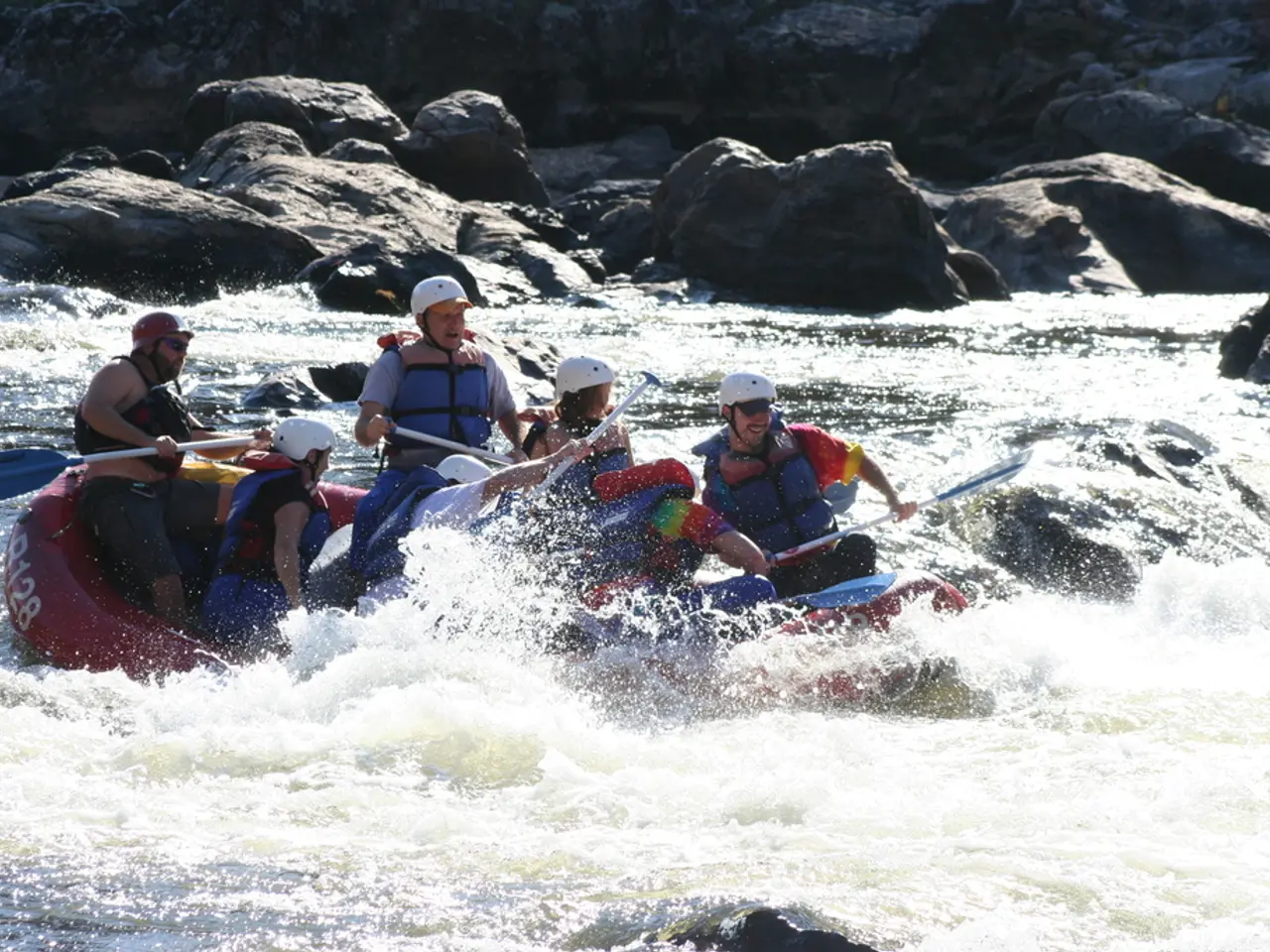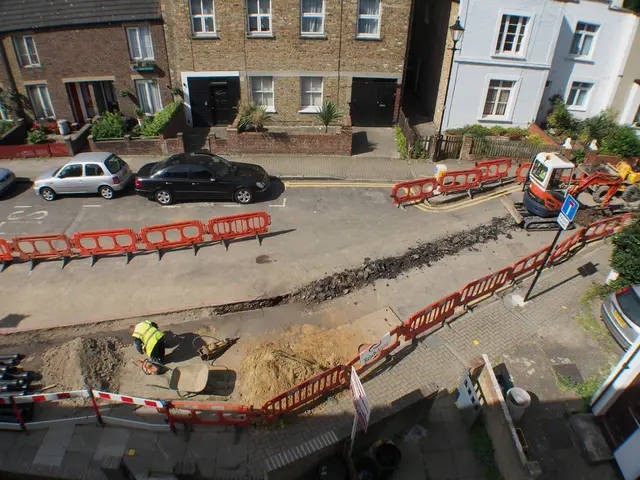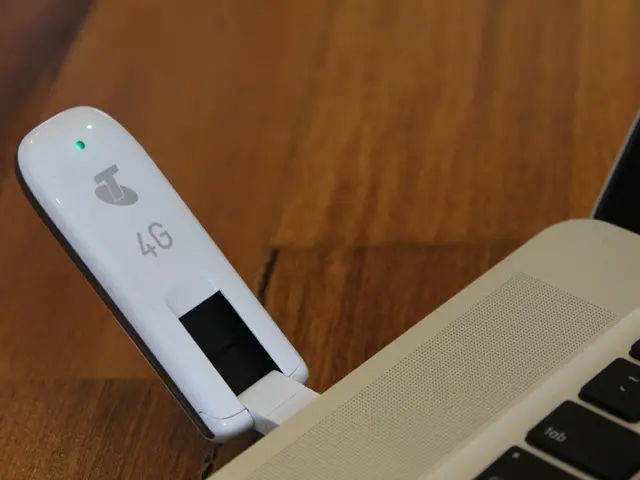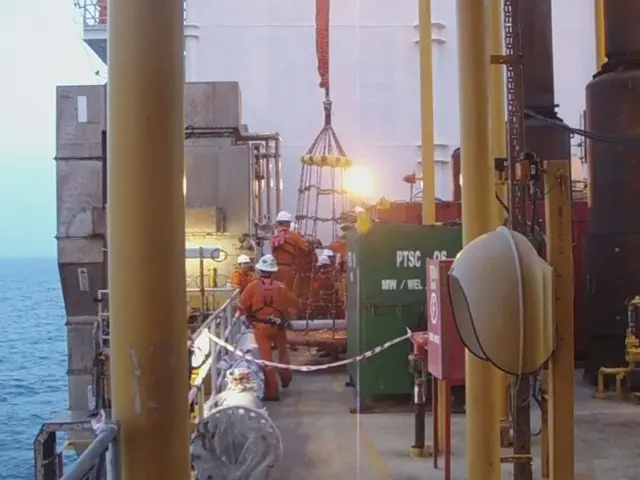Underwater Video Production Tutorial for GoPro Newcomers
Capturing stunning underwater videos with a GoPro camera requires the right accessories and a bit of know-how. Here's a guide to help you get the most out of your GoPro underwater.
Protection
A waterproof housing or dive case is essential to protect your GoPro at depth. Both the original and reliable third-party waterproof cases ensure the camera remains dry and functional underwater [1][3].
Color Accuracy
Underwater environments absorb red and orange wavelengths, making colors appear dull. To restore natural colors for more realistic and vibrant footage, consider using color correction filters (red filters) [1][3]. However, it's worth noting that red filters are not needed on the GoPro Hero6 Black, Hero7 Black, or Hero8 Black [6].
Lighting
Underwater lighting, such as LED dive lights or video lights, enhances visibility and color, especially in deeper or murky water where natural light diminishes [3][2]. Video lights add missing wavelengths of light that are absorbed in the depths of the water.
Stabilization
Stabilizing mounts or trays with neutral buoyancy help reduce shake and provide steady footage, which is crucial for professional-looking videos [3]. Floating hand grips or mounts prevent loss of the camera if dropped and aid in handling in water environments [1][5].
Creative Accessories
Additional creative accessories might include external monitors, lens adapters, or macro lenses for close-ups and specialized shots [3]. A dome port lens allows for dramatic over-under shots (half above water, half underwater) and improves wide-angle capture, useful for creative compositions [3][5].
Settings
For underwater photos with the GoPro Hero7 or Hero8, recommended settings include RAW File, Lens WIDE, Color GoPro, Auto White Balance, ISO 100-1600 (depending if you have lights), Sharpness High [4]. For underwater video, use 60 fps as it produces smoother video [7]. If you want more control over color correction in post-production editing software, experiment with the ProTune options and change the color to "Flat" [8].
Preparation
To prepare the camera for underwater video, charge the battery, use a fully charged battery for every dive, and ensure the correct Micro SD card is used [9]. Video lights are good up to about 5 or 6 feet away, depending on the number of Lumens of the light and the visibility of the water [10].
GoPro-specific Accessories
The MacroMate Mini wet close-up lens for GoPro can be used to get closer to subjects in macro photography [11]. The Flip5 filter pro pack is recommended for using different filters at different depths [12]. Time-Lapse video is really simple with the GoPro Hero4, Hero5, Hero6, Hero7, and Hero8 [13]. The GoPro Hero7 and Hero8 have a TimeWarp video feature for smooth, hand-held time lapse video while moving around [14].
Note
- Not all Micro SD cards work with GoPro, and the official Micro SD card recommendation can be found at this link: GoPro Micro SD Card Considerations
- For higher resolution underwater video, keep the same settings but change the resolution to either 2.7k or 4k. Remember that 4k at 60fps produces a very large file and is not only difficult to edit but may not even play back on your computer [7].
By focusing on gear that enhances protection, color accuracy, lighting, and stabilization specifically designed for underwater conditions, you can capture stunning underwater videos with your GoPro. Starting with the essentials—a proper waterproof case, red filter, and stabilizing mount—is recommended before expanding your setup.
[1] GoPro Waterproof Housing [2] GoPro Video Light [3] GoPro Dive Case [4] GoPro Underwater Photography Settings [5] GoPro Dome Port Lens [6] GoPro Red Filter [7] GoPro Underwater Video Settings [8] GoPro ProTune Settings [9] GoPro Micro SD Card [10] GoPro Video Light Range [11] MacroMate Mini Wet Close-Up Lens for GoPro [12] Flip5 Filter Pro Pack [13] GoPro Time-Lapse Video [14] GoPro TimeWarp Video
- To ensure the longevity of your GoPro when diving, invest in a reliable waterproof housing or dive case.
- Underwater environments can make colors appear dull, prompting the need for color correction filters like red filters to restore natural colors.
- LED dive lights or video lights are crucial for enhancing visibility and color, especially in deeper or murky water where the light diminishes.
- Stabilizing mounts or trays with neutral buoyancy help maintain steady footage, vital for professional-looking videos.
- Floating hand grips or mounts reduce the risk of losing the camera if dropped and provide convenience in water environments.
- Dome port lenses allow for captivating over-under shots and enhance wide-angle capture, benefiting creative compositions.
- To capture high-quality underwater photos using a GoPro Hero7 or Hero8, use settings such as RAW, Wide Lens, and Sharpness High.
- For smoother underwater videos, set the frame rate to 60 fps, while experimenting with ProTune options for manual color correction.
- Proper preparation is essential for underwater video; ensure the battery is fully charged, the right Micro SD card is used, and lights are properly positioned.
- The MacroMate Mini wet close-up lens is an excellent accessory for macro photography, while the Flip5 filter pro pack offers various filters for different depths.
- Time-lapse videos are effortless to make with a GoPro Hero4, Hero5, Hero6, Hero7, or Hero8, making these models suitable for capturing natural phenomena.
- The TimeWarp video feature available on GoPro Hero7 and Hero8 makes it possible to create smooth hand-held time-lapse videos while on the move, allowing you to explore and capture breathtaking underwater destinations like reefs, wrecks, or even encounters with sharks, critters, and nudibranchs.




